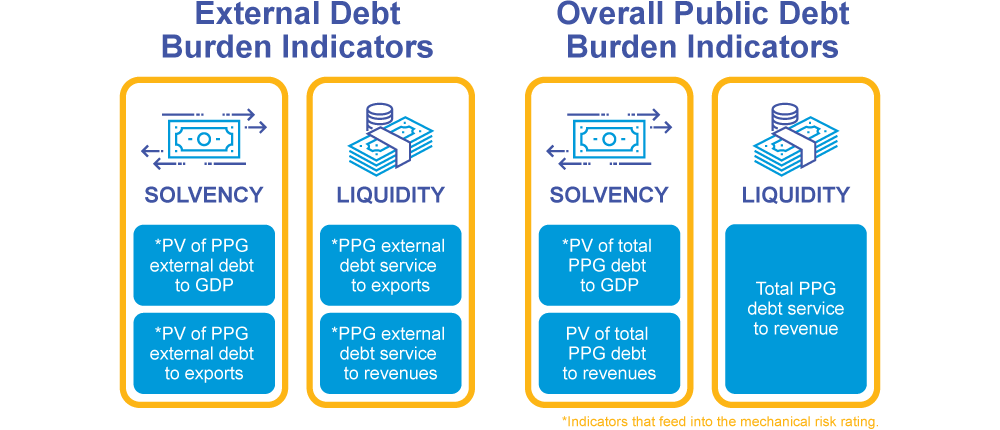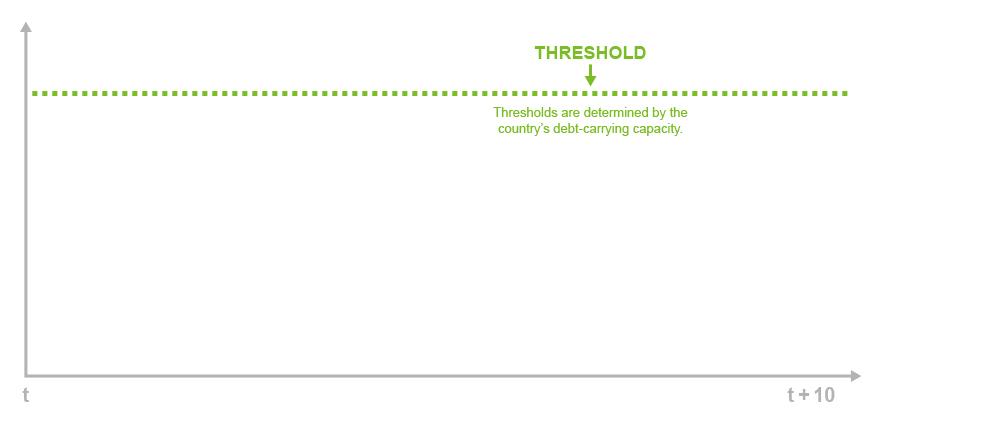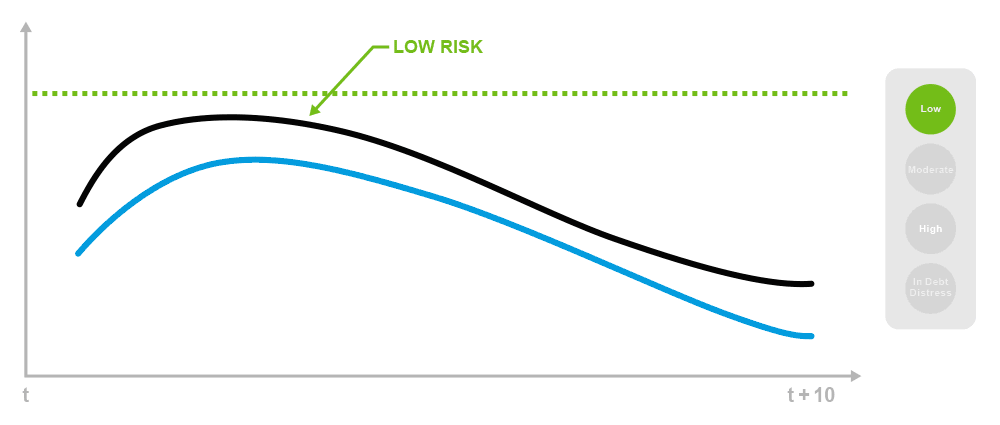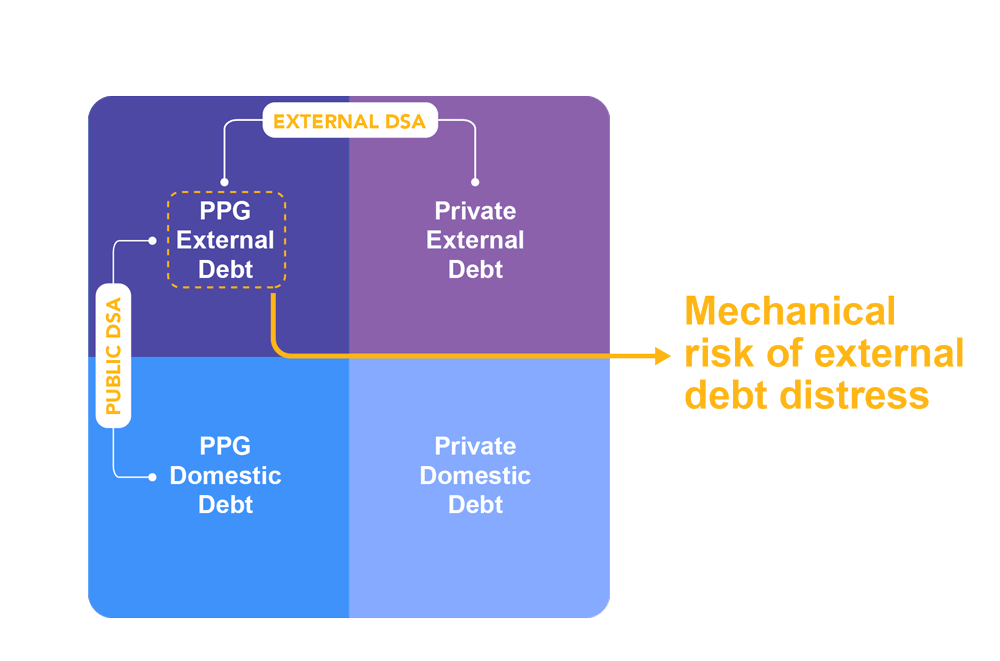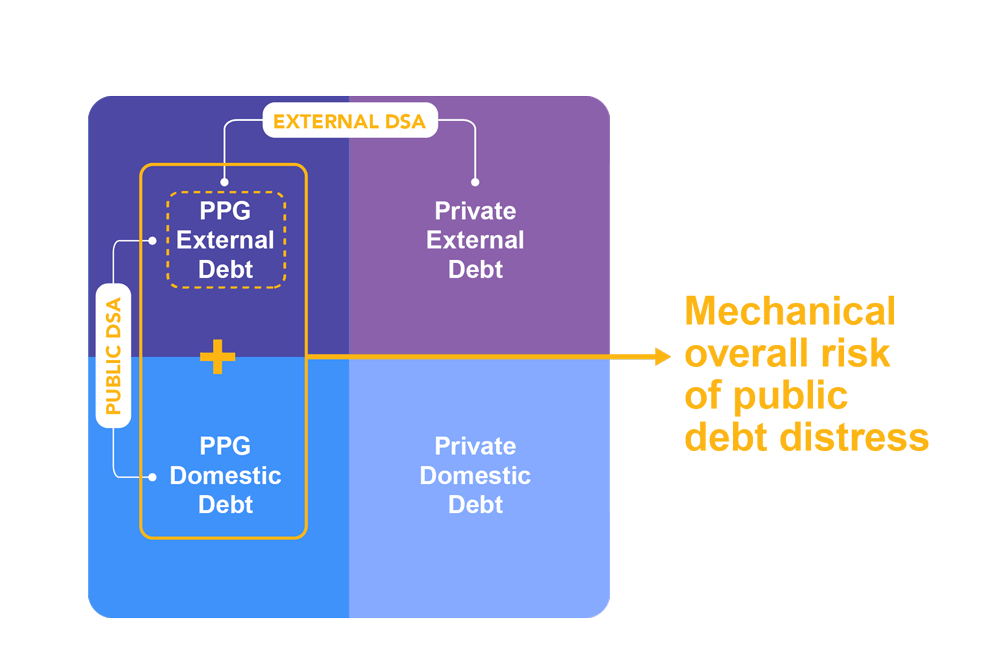
OVERVIEW
Welcome to Station 1! This section provides a brief overview of the LIC DSF to answer the following questions:
What is the LIC DSF?
The joint IMF-World Bank Debt Sustainability Framework for Low-Income Countries (LIC DSF) is a tool for assessing debt vulnerabilities that guides borrowing and lending decisions.
The LIC DSF is the cornerstone of the international community’s assessment of debt-related risks in LICs, with important operational implications for stakeholders.
First introduced in 2005, the LIC DSF has been subject to a comprehensive review every 5 years. The most recently revised LIC DSF became operational in 2018.
Why do we need the LIC DSF?
The objective of the LIC DSF is to support efforts by low-income countries to achieve their development goals, while minimizing their risk of experiencing debt distress. Debt crises are costly to debtors, creditors, and the international monetary and financial system.
In recent years, debt vulnerabilities in LICs have risen. Since 2013, many countries have witnessed an increased risk of debt distress and over two-fifths of these countries are facing significant debt challenges.
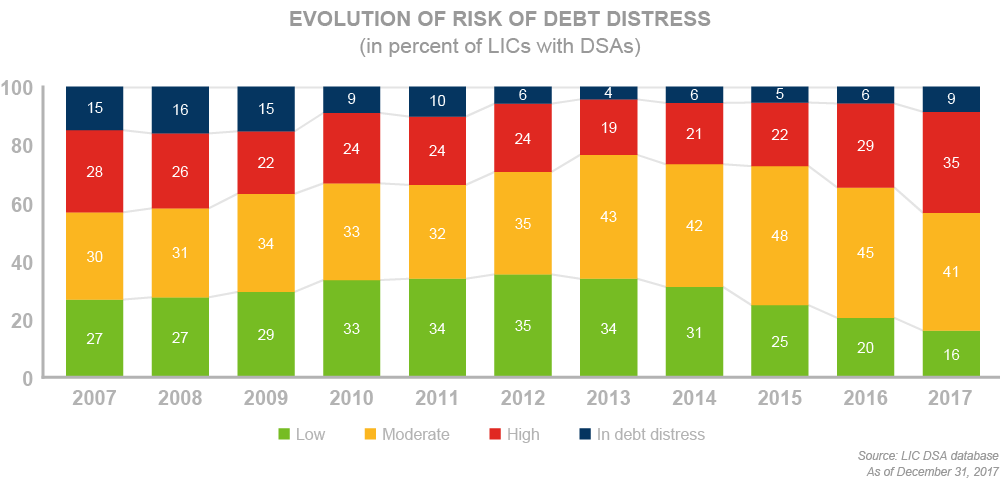
A full debt sustainability analysis (DSA) should generally be produced at least once every calendar year.
For the IMF, both surveillance (Article IV) and lending (IMF program) should be accompanied by a DSA. For the World Bank, an annually produced DSA is required to determine the IDA credit-grant allocation. See the “Guidance Note” for more information.
Who should use the LIC DSF?
The LIC DSF applies to low-income countries that have substantially long-maturity debt with terms that are below market terms (concessional debt), or to countries that are eligible for the World Bank’s International Development Association (IDA) grants.
A low-income country may eventually graduate from the concessional debt sustainability analysis
and migrate to the Debt Sustainability Analysis for Market-Access Countries (MAC DSA) when its per capita income level exceeds certain threshold for a specified period or when it has the capacity to access international markets on a durable and substantial basis.
MAC Borrowing
Where the graduation criteria apply, the projected share of concessional debt in the total external debt stock should be carefully assessed based on the projected evolution of public financing. This includes assessing the recent and projected share of official grants and concessional loans in budget financing; the share of domestic debt financing; and the durability of the access to the international capital markets. Importantly, there should be strong emphasis on the realism of financing projections.
For more information on graduation criteria, please see Eligibility to Use the Fund's Facilities for Concessional Financing for 2017 ) and Review of IDA’s graduation policy, 2016.
To access the MAC DSA template.
LIC Borrowing
Generally, LICs can borrow on concessional terms from bilateral official lenders, or through multilateral facilities available under the IMF Poverty Reduction and Growth Trust and the World Bank’s IDA.
DSAs play a critical role in guiding borrowing and lending decisions.
How does the LIC DSF template work?
The LIC DSF template, an Excel-based tool, analyzes scenarios based on user inputs. These inputs are in turn based on a comprehensive macroeconomic framework consisting of historical data and interrelated projections of key macroeconomic variables, often referred to as the baseline scenario. Also important is a financing strategy consistent with the macroeconomic framework (discussed in station 2).
The template automatically applies a series of shocks, or stress tests, to gauge the sensitivity of the debt burden indicators to changes in the baseline scenario. All the debt burden indicators are based on Public and Publicly Guaranteed (PPG) debt and the solvency indicators are in Present Value (PV) terms.
Present Value
The present value of debt is equal to the sum of all future debt service payments (principal and interest), discounted to the present using a given discount rate (set at 5 percent for the LIC DSF).
If the discount rate and the contractual interest rate of a loan are the same, then the PV is equal to (or close to) the face value. If, however, the contractual interest rate of the loan is less than the discount rate, then the PV of the debt is less than the face value, implying that the loan has some degree of concessionality. The grace period, maturity, and frequency of payments associated with the loan also affect its concessionality.
For loans with a grant element equal or below zero, the PV will be set equal to the face value of the loan.
The LIC DSF template classifies countries based on their debt-carrying capacity (see station 4 for explanations). It also compares countries' debt indicators under the baseline and stress scenarios to the relevant thresholds. Risk signals from the template, referred to
as mechanical risk signals, are combined with judgement to determine the risk ratings of external and overall public debt distress.
External and Public DSA
The LIC DSF has two components: an external DSA and a public DSA. For each DSA, the framework generates a mechanical risk signal by comparing the relevant debt indicators with the thresholds. The final risk rating is determined by the combination of the mechanical signals and judgement. Judgement is used to account for other factors that inform the risk rating, but may not be fully captured under the model.
Other Factors Outside the Model
Other factors outside the model may be used to inform the final risk rating. These factors are short-lived and marginal breaches, availability of liquid financial assets, long-term considerations, conflicts, currency unions, availability of insurance-type arrangements, confidence in the macroeconomic baseline projections, and other country-specific considerations.
External DSA 
External DSA
Mechanical risk of external debt distress
The mechanical external debt distress signal is derived from the four debt indicators associated with PPG external debt.
Final risk of external debt distress
The final risk of external debt distress may be different from the mechanical signal through judgement, which includes PPG domestic debt, private external debt, market financing vulnerabilities, and other factors not captured in the model.
The external DSA covers total external debt in the economy owed by both the public sector and the private sector. Within the external DSA, the mechanical external risk signal is derived from the debt indicators associated with the public external debt. The final external risk rating can be different from the mechanical signal after applying judgement, which is used to assess whether private external debt, public domestic debt, market financing vulnerabilities, or other factors not captured in the model may have fiscal implication and affect the risk rating.
The LIC DSF coverage excludes private domestic debt. It is shown for expositional purposes.
To sum up: the LIC DSF
|
INTRODUCES a composite indicator of debt-carrying capacity |
|
|
VALIDATES the realism of the underlying assumptions |
|
|
PRODUCES multiple stress scenarios tailored to country-specific risks |
|
|
OFFERS enhanced guidance on judgement to determine the risk rating of debt distress |
This process is illustrated by the diagram below. Yellow text indicates new features of the LIC DSF that came into effect in 2018.
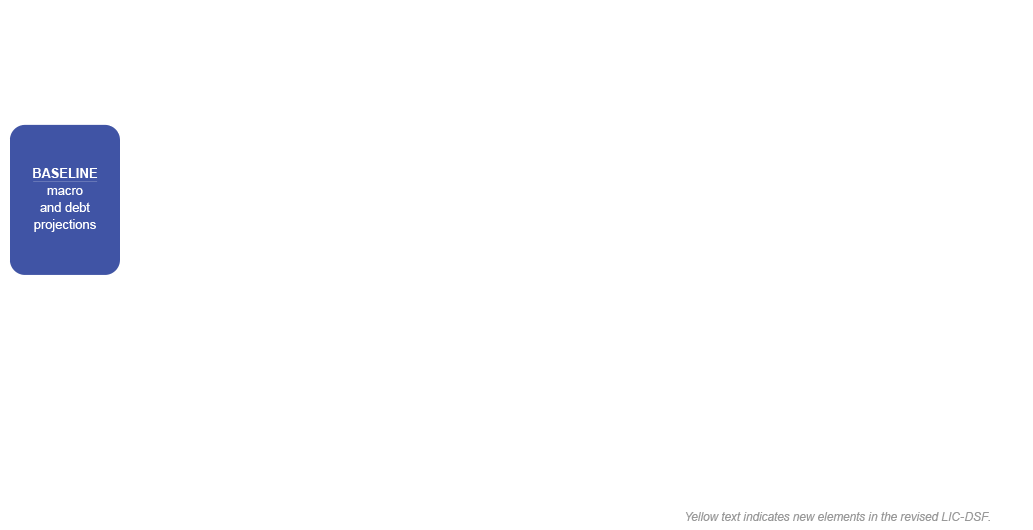
 Takeaways for Station 1
Takeaways for Station 1
- The LIC DSF is a widely used framework that produces public and external DSAs to assess debt vulnerabilities.
- DSAs are typically produced at least once a year to help guide borrowing and lending decisions and assess the risk of debt distress.
- The LIC DSF is applicable to countries that can borrow concessionally. For example, they can borrow with public debt maturities spanning several decades and on borrowing terms that are better than the average market terms.
- Every DSA is based on a coherent set of economic policy assumptions over a long projection period, which are subjected to many stress tests.
- The final risk of debt distress rating is based on how a set of indicators compares to thresholds that were based on each country’s debt-carrying capacity and factors in additional judgement based on country-specific circumstances.









